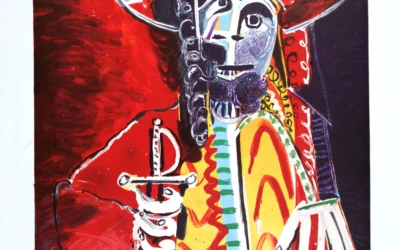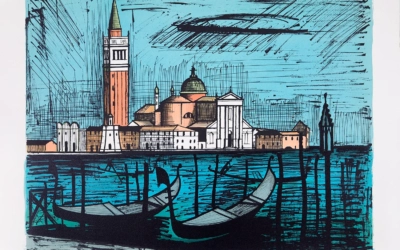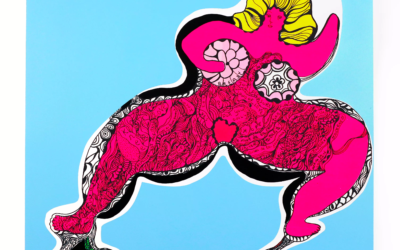Galerie Arenthon is pleased to present a selection of Hans Hartung's engravings and zincographs from the 1950s and 1970s.
Las Estampas de la Cometa, a series of five etchings executed in 1970, was published in 1971 in Barcelona by Gustavo Gilli. It marks Hans Hartung's reunion with copper engraving. Indeed Hartung returns here after 17 years with metal, acid and intaglio tools, for a result very representative of his work. It is also with Gustavo Gilli that he developed his famous "bluish black HH".
The selection of zinc prints that we offer allows you to discover this technique often used by Hartung, in order to multiply the effects and colour variations. The Gallery presents a series of rare working proofs at a low price allowing to enter the process of realisation of the works. These proofs are also an opportunity to reflect on repetition and reproducibility in art, notions dear to Hans Hartung.
Choice of exhibited works :
-
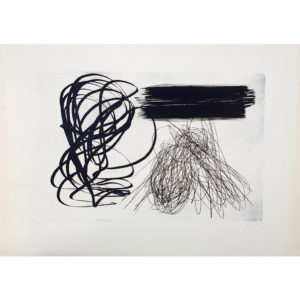
Las Estampas de la cometa, plate A
Hans Hartung
SOLD
-
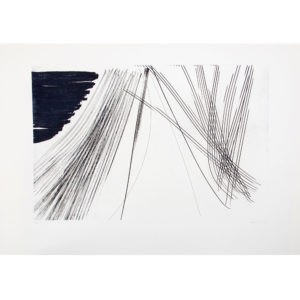
Las Estampas de la cometa, plate B
Hans Hartung
SOLD
-
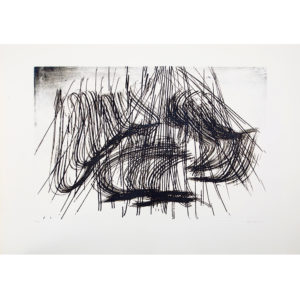
Las Estampas de la cometa, plate C
Hans Hartung
SOLD
-
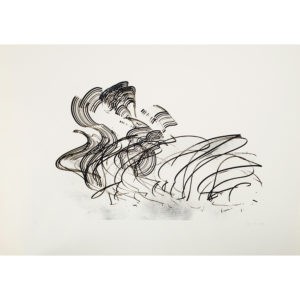
Las Estampas de la cometa, plate D
Hans Hartung
SOLD
-
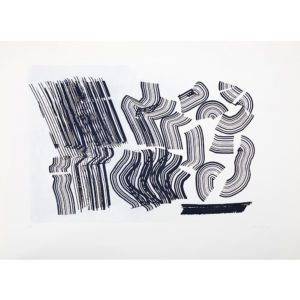
Las Estampas de la cometa, plate E
Hans Hartung
SOLD
-

Engraving 21
Hans Hartung
SOLD
-
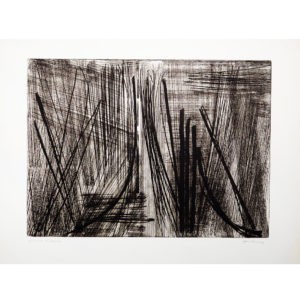
Engraving 25
Hans Hartung
SOLD
-
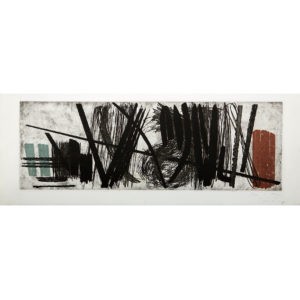
Engraving 4
Hans Hartung
8 500€
-
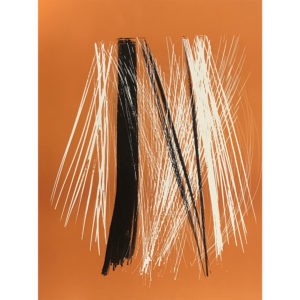
L 1971-6 | B
Hans Hartung
SOLD
-
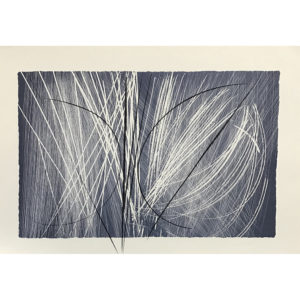
L 1971-2 | B
Hans Hartung
SOLD
-
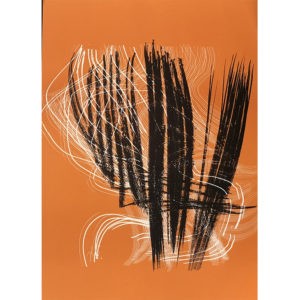
L 1971-5 | A
Hans Hartung
SOLD
-

L 1971-7 | C
Hans Hartung
VENDUE
Biography: Hans Hartung (1904-1989)
Hans Hartung was born on 21 September 1904 in Leipzig. From his childhood he was interested in art. From 1924, he attends the secondary school in Dresden, becoming fascinated by Rembrandt, Goya, Frans Hals, Le Greco, then by . He paints by taking inspiration from some of these works, simplifying the composition to retain only the coloured masses. In 1926, Hans Hartung moved to Paris, became enthusiastic about what he saw of Picasso and frequented the Louvre extensively. There hespent whole days looking at the old masters and copying them, adapting them to his own visions.
Hans Hartung's life is a life marked by historical circumstances, but in which art constantly plays a central role. During the Second World War, Hartung is mobilized, but after the armistice he takes refuge with the family of Julio González in the Lot. During this period and under difficult material conditions, he continued to produce, notably series of abstract inks, some paintings, but also series of "heads" inspired by Julio González and Guernica by Pablo Picasso. In 1943, Hans Hartung went to Spain, under very perilous conditions. He was arrested and sent to the Miranda del Ebro concentration camp for seven months. There he teaches art history to his fellow inmates based on memories of Wilhelm Pinder's teaching in Leipzig, makes portraits and at least one self-portrait.
Hartung then joined the Legion in North Africa. He was wounded in 1944 and lost a leg. Reformed the following year,he returned to Paris. With the help of Alexander Calder, he was naturalized as a French citizen in 1946 and received the honours of France .
During this period, Hans Hartung established himself as one of the determining figures of the Second School of Paris. He took part in several exhibitions; his first personal exhibition took place in Paris in 1947 at the Lydia Conti gallery, where he was much noticed by critics such as Madeleine Rousseau: "A painting by Hartung is, without doubt, a moment in the painter's life; but, even more so, it is a moment in our civilization, with the constraints, dangers and hopes it brings and which, to a large extent, determine the individual attitude of each person.[1] »
Multiplying the exhibitions of his paintings, engravings and lithographs, he received in 1960 the Grand Prix International de Peinture at the Venice Biennale, then in 1977 he was elected to the Academy of Fine Arts and the Centre Pompidou organised a travelling exhibition of his engravings and lithographs. In 1982, he was given a permanent personal room at the Staatsgalerie Moderner Kunst in Munich.
After his death, Hartung's work was not very present on the artistic scene for a few years, but from the end of the 90s and the beginning of the 2000s, it was rediscovered by the public and by artists with very diverse currents and techniques. Today, Hans Hartung is considered one of the greatest exponents of abstract art, as the forerunner and pioneer of many avant-garde movements that will develop in the second half of the 20th century: among others the so-called informal, gestural, tachist, lyrical and action painting movements.
Hans Hartung and engraving
From 1932 onwards, engraving became an important part of Hans Hartung's work. Indeed, according to the expression of Rainer Michael MasonHartung is more an engraver-painter than a painter-engraver. For him, engraving is first and serves as a model for the rest of his production.
From 1971 onwards, his work on engraving became so fundamental for him that it influenced his relationship with painting. This influence is present in the instruments used - he scratches in the fresh paste of colours - but it goes hand in hand with a whole aesthetic reflection. Hartung described his new painting as "the fruit of [his] long research in lithography" . Engraving is at the heart of his reflections on composition, on line and curve, around questions of rhythm, intensity, form and volume.
Also, his work on engraving allows Hans Hartung to make reproducibility a central notion of his work. Pierre Wat expresses it in these terms: "The major part of his activity dedicated to a form of copying itself, the report, clearly indicates that, for him, against the spirit of the times, the quality of a work has nothing to do with its uniqueness. On the contrary, he claims repetition as a condition for the quality of his painting: the more you produce, the better what you produce will be.[3] »
Throughout his life, engraving thus played a decisive role in Hans Hartung's work. The Galerie Arenthon invites you to discover a selection of his work.
You can buy your litogroahie inour art gallery in Paris.
[1] Madeleine Rousseau, Hans Hartung, Stuttgart, Domnick Verlag, 1949, "Life and Work".
[2] Rainer Michael Mason, " Hartung et l'estampe ", in Anne Pontégnie (dir.), Hartung, 10 perspectives, Milan, 3 Continents Editions, 2006
[3] Pierre Wat, Hans Hartung, La peinture pour mémoire, Hazan, 2018, "Hans Hartung et la reproductibilité de l'œuvre d'art".

